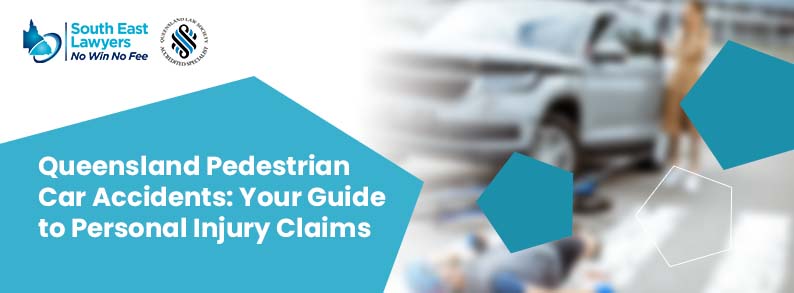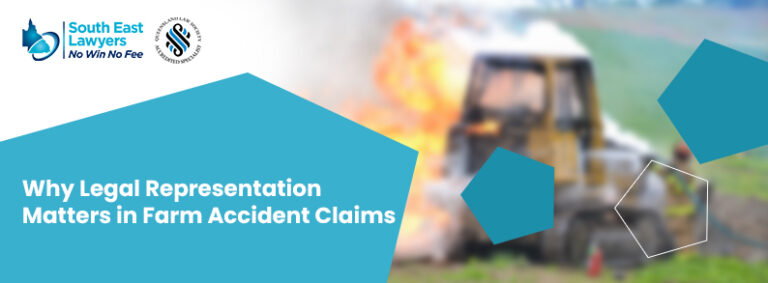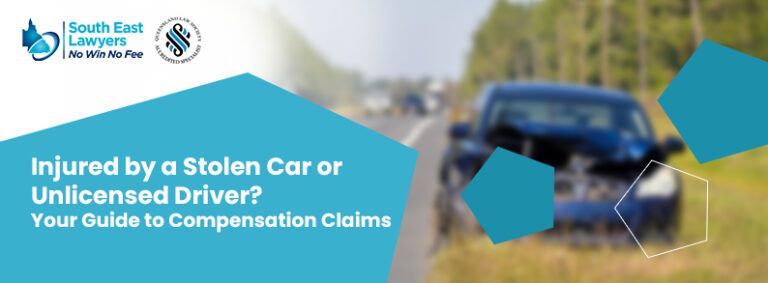In recent years, Queensland’s urban centres and regional areas have witnessed a concerning uptick in pedestrian car accidents.
These incidents not only disrupt lives but often lead to long-term physical and psychological injuries.
As road users, whether behind the wheel or on foot, understanding the frequency, causes, and consequences of such accidents is crucial.
For victims, the aftermath often presents a maze of medical treatments, insurance discussions, and legal procedures.
In this article, we’re going to delve into the intricacies of pedestrian car accidents in Queensland, focusing on the personal injury law framework that governs compensation claims.
Whether you’ve been directly affected or are seeking to be informed, understanding the legal landscape can empower individuals to make informed decisions and advocate for their rights.
Pedestrian Car Accidents in Queensland
With a diverse population and vast landscape in Queensland, a pedestrian car accident can have many causes. Some factors that could contribute to accidents of this nature include:
Urbanisation and Infrastructure
As urban areas expand, intersections and roads become busier. Sometimes, infrastructure development lags behind, leaving gaps in pedestrian-friendly designs, such as adequate crossings, footpaths, and traffic calming measures.
Driver Distractions
The modern age brings a multitude of distractions. Mobile phone use, in-car entertainment systems, and other technological interruptions can divert a driver’s attention, even if just momentarily, leading to accidents.
Behavioural Factors
Jaywalking, late-night pedestrian activities without proper visibility measures, or crossing roads under the influence of alcohol or drugs can heighten the risk for pedestrians.
Tourism and Unfamiliarity with Roads
Queensland, being a significant tourist hub, often has visitors unfamiliar with local road rules or layouts, contributing to misunderstandings or misjudgements on roads. Statistics further underscore the gravity of the situation. According to recent reports, pedestrian accidents represent a notable percentage of total motor vehicle accidents in the region, making up 10% of the total number of road accident fatalities that have occurred so far in 2023. In addition to this, more pedestrian accidents having already occurred up until this time (October 2023) in 2023 than had occurred in the whole year of 2022.
Pedestrian accidents and compensation claims in Queensland
Queensland’s legal framework has robust provisions designed to protect and compensate victims of pedestrian car accidents. Understanding the principles and procedures of personal injury law in this context can offer clarity to those impacted. Some key information includes:
- Principle of Negligence: Central to most personal injury claims are the principle of negligence. The law seeks to determine if the driver owed a duty of care to the pedestrian and if that duty was breached, resulting in injury.
- No-Fault Scheme: Queensland operates under a partial no-fault scheme for motor vehicle accidents. This means that even if a pedestrian was partially at fault (e.g., jaywalking), they might still be eligible for certain types of compensation, although the compensation amount can be reduced depending on the degree of fault.
- Types of Compensation: Victims can pursue various forms of compensation, including:
- General Damages: For pain, suffering, and loss of life enjoyment.
- Special Damages: Quantifiable losses, such as medical bills, rehabilitation costs, and lost wages.
- Future Damages: Projected costs of long-term medical care or future loss of earnings.
- Domestic Assistance: Compensation for services like housekeeping or caregiving, which the injured party can no longer perform.
- Claim Process and Timeline: Once a pedestrian accident occurs, victims should promptly seek medical attention, report the accident, and consider initiating a claim. There’s a statute of limitations in Queensland, typically three years from the date of the accident, within which a claim must be lodged.
- Role of CTP Insurance: Compulsory Third Party (CTP) insurance is mandatory for all vehicles in Queensland. In the context of pedestrian accidents, the at-fault driver’s CTP insurance typically covers the compensation payable to the injured pedestrian.
Rights and processes for victims of pedestrian accidents
Navigating the aftermath of a pedestrian car accident in Queensland involves a series of crucial steps to ensure one’s well-being and to initiate appropriate legal proceedings and claim processes. These steps include:
1.Seeking medical attention. Regardless of the accident’s severity, always seek medical attention. Immediate assessment and treatment are paramount, and medical records serve as essential evidence for any compensation claim.
2. Reporting the Accident. It’s crucial to report the incident to the Queensland Police, obtaining a police event number for future reference.
3. Gathering Information. After ensuring safety and medical care, if possibly you should aim to do the following:
- Collect personal and vehicle details of the driver involved.
- Note down the vehicle’s registration number, make, and model.
- Document details of any witnesses present.
- If possible, take photographs of the accident scene, any visible injuries, and damages.
Of course, only try to do the above if it is safe for you to do so. This information can make the personal injury claim process a lot easier.
4. Initiating a Compensation Claim. To claim compensation, you will need to notify the at-fault party’s CTP insurer about the intention to claim and complete and submit necessary claim forms, which can typically be sourced from the insurer or online platforms.
5. Engaging Legal Representation: While not mandatory, many victims opt to engage a personal injury lawyer. We can guide victims through the complexities of the claim and ensure all facets are addressed. Our expertise enables us to help you receive the maximal amount of compensation for your pedestrian accident claim.
6. Appeal and Further Action: If there’s disagreement with the insurer’s decision, be it a claim denial or a compensation amount, victims can challenge the decision. This might involve further negotiations or, in certain circumstances, taking the matter to court. Again, having our support can make this process a lot easier to navigate.
We can help you with pedestrian accident claims in Queensland
Addressing the aftermath of a pedestrian accident in Queensland requires knowledge of rights and understanding of the personal injury compensation process. Having the assistance of experienced and knowledgeable personal injury lawyers ensures you have support throughout the entire process of your pedestrian injury compensation claim.
At South East Injury Lawyers, our personal injury legal services are available throughout the Brisbane and surrounding south east Queensland area. With experience in a wide range of personal injury matters, including pedestrian accidents, we can help you today. Call us on +61 1300 446 999 or book a consultation with us here.






